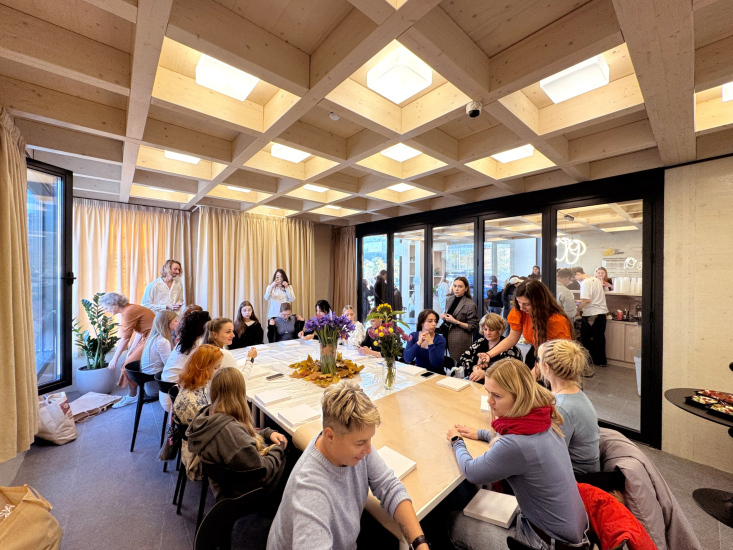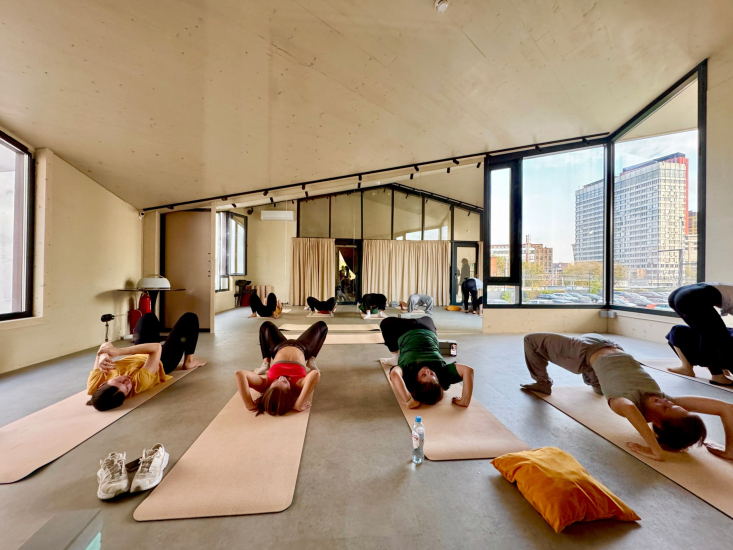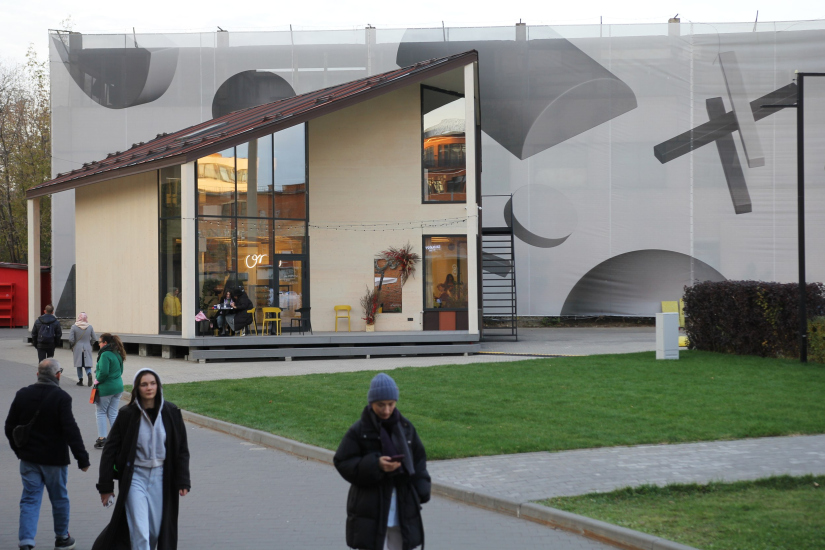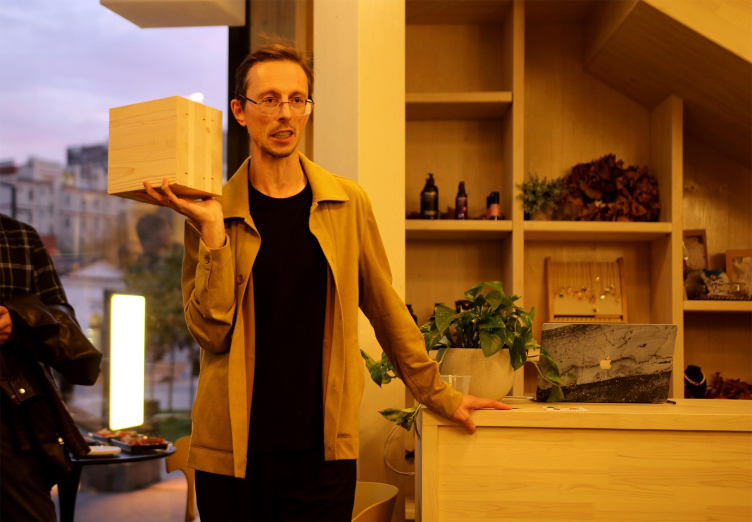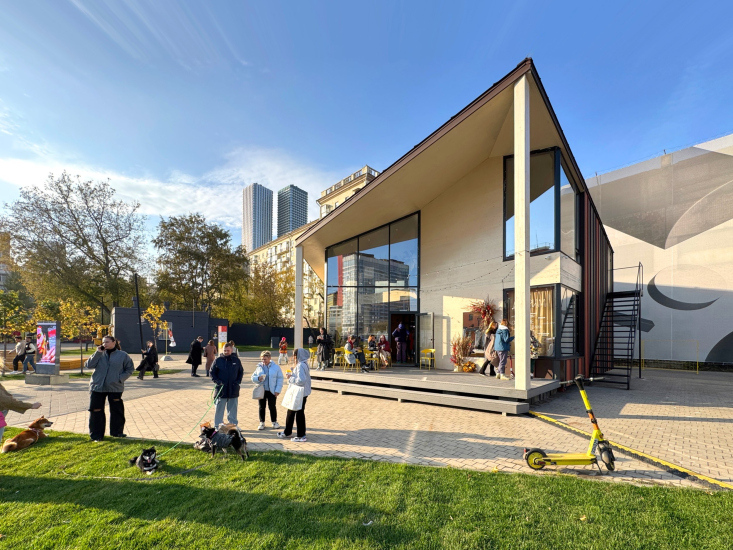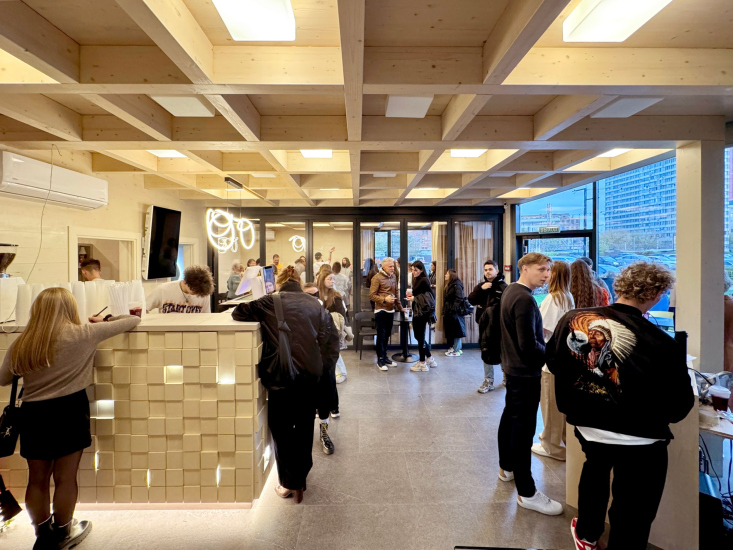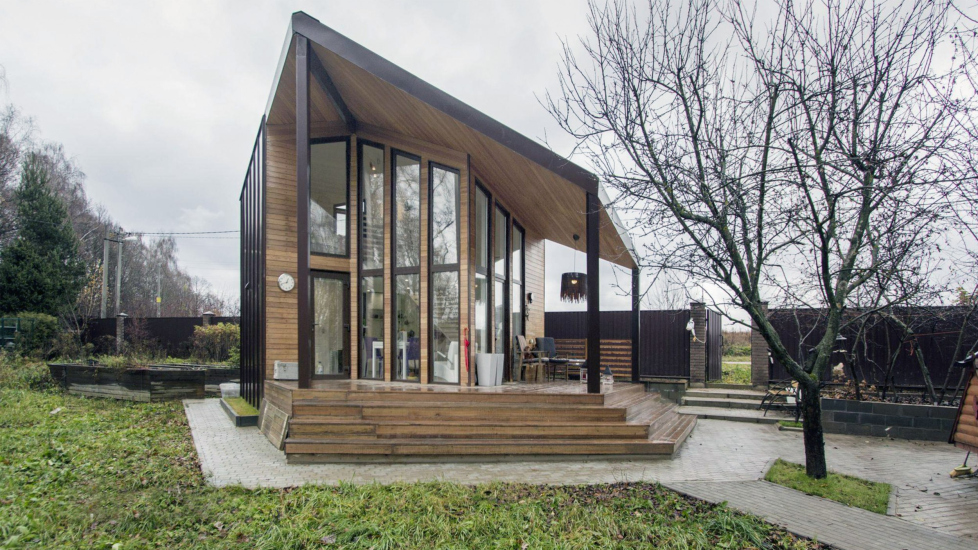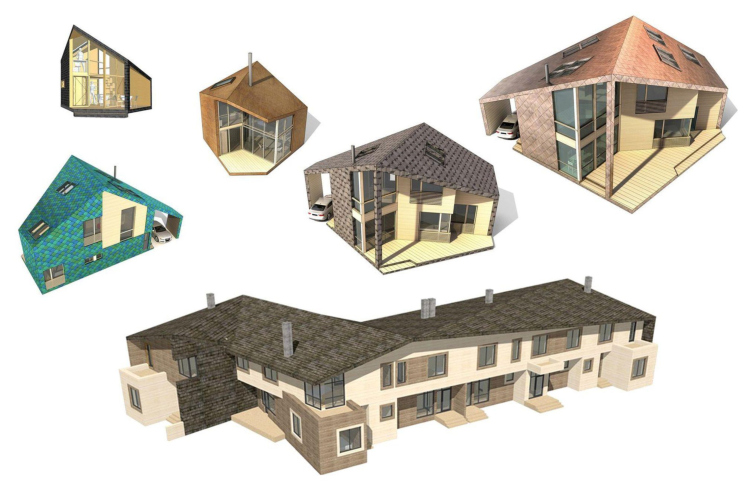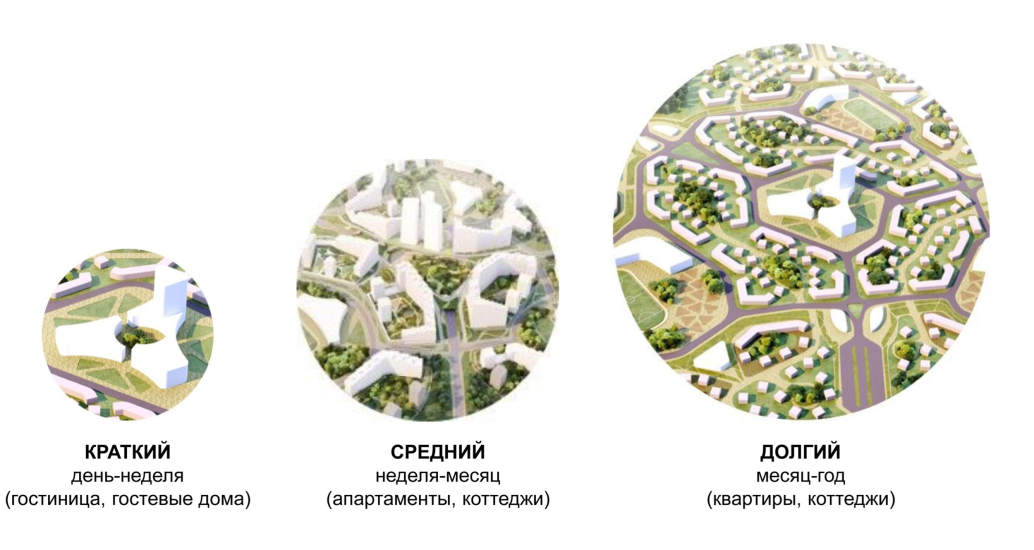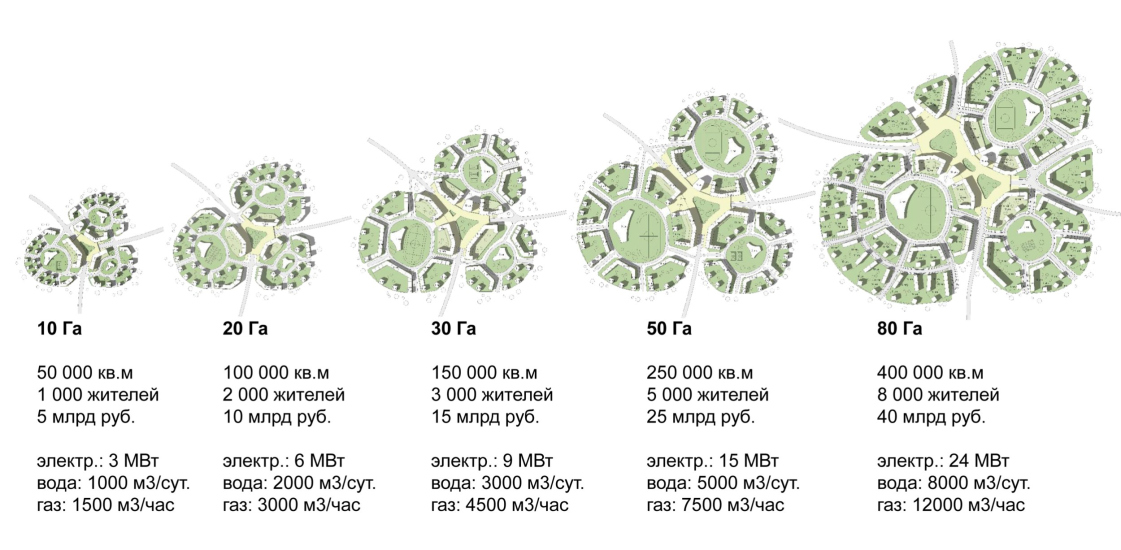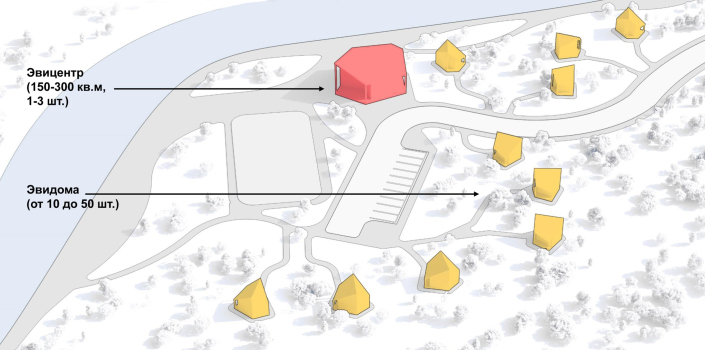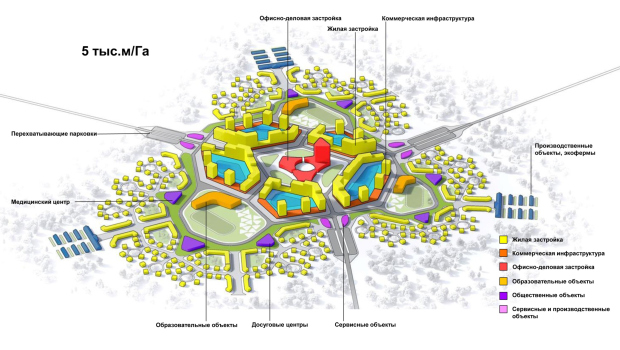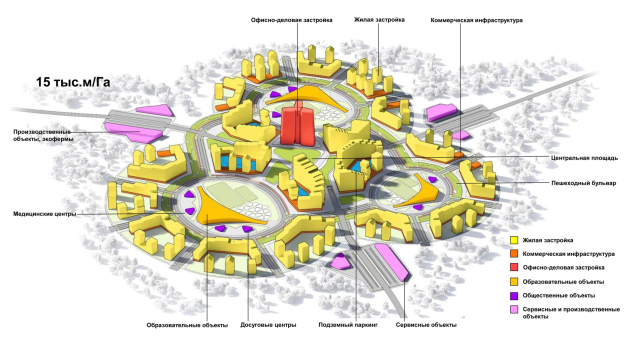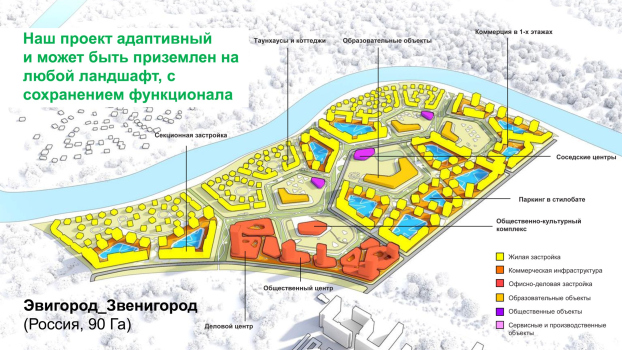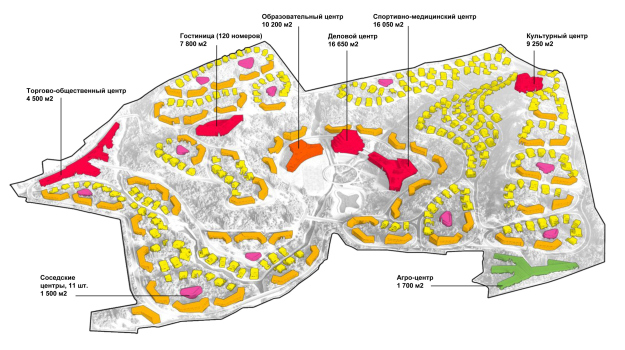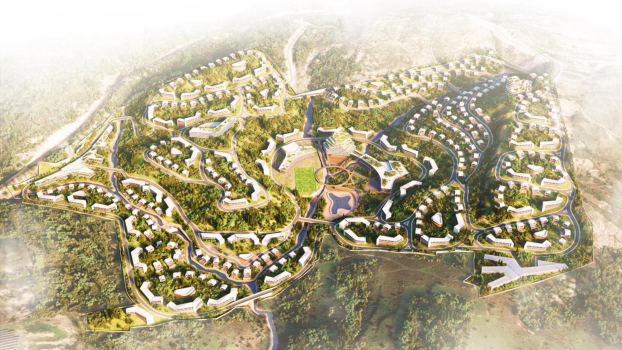Microcultural Center
According to Andrey Asadov, the EvyCenter has found a perfect location within a walking distance to the metro station and in a well-known public space. A large number of people pass through here daily – not just visitors to Hlebozavod No. 9 but also residents and office workers from the Savelovsky City business complex. With the completion of several more constructions around Polkovaya Street, foot traffic is expected to grow threefold. Another cozy, glowing display on their path won’t hurt, especially since the café is secondary to the center’s developmental leisure focus. The broad, still-evolving specialization of the center promises a variety of themes and audiences. It’s not focused on the elderly or young children, but instead aims to cover all age brackets.
It must be said that the term “inclusivity”, announced by the architects, seems well-suited to this project. Not the little house on Dmitrovskaya – though it is charming – but the project as a whole. As Andrey Asadov mentioned during the presentation, the pavilion is a pilot model. A “pilot model” of what? Just bear with us for now! This requires taking a deep breath because we are dealing with a truly telescopic, large-scale planning process.
But first, a bit more about the pavilion.
Evy-Center
Copyright: © ASADOV Architects
It is a two-story structure with an area of 150 square meters. Unlike previous private home projects by ASADOV Architects, which mostly relied on frame technology, this pavilion is made from CLT panels. Manufactured at the factory from cross-laminated timber panels within two months, it was assembled on-site in just one day. According to Andrey Asadov, CLT panels are convenient due to their predictable results, and their nearly zero combustibility is already becoming legendary.
Andrey Asadov shares about the advantages of CLT panels
Copyright: Photograph © Julia Tarabarina, Archi.ru
Inside, there is a double-height hall, a tall ground floor with a café counter, and a staircase leading up to the gymnasium. The first floor is divided by a folding glass partition, separating the lecture and workshop area. The interior is not exactly simple: the wooden staircase railing is made of tempered, frameless glass, and thus the spaces feel anything but cramped. The design is minimalist; the only functional element that is not decorative is the coffered ceiling, though its grid also incorporates supporting beams. Natural wood predominates, although with a translucent finish. On the outside, this minimalist design is partly wrapped in terracotta and gray folded steel panels, which, according to the architects, are also assembled “like a construction kit”, just like the house itself.
The shape of the building is essential to its image – it is recognizable, characteristic of other ASADOV projects: open, asymmetrical, and seemingly unstable. The pentagon-shaped plan, with a notch resembling a three-pointed star, is highlighted by a “wing” of the roof, raised on a slender support. Light from the two-tiered stained-glass window falls onto the open terrace.
The House
The similarity to the “Loskutok” pavilion, built in 2015 in the Muzeon Park and still functioning there as a café, is plain to see – Andrey Asadov himself emphasized it during the presentation: "We’ve long dreamed of our own line of modular homes, and now we’ve finally decided to get to work”. It must be said that still in 2015, the architect described “Loskutok” as a prototype for a miniature residential house and an example of organic settlements. It was initially conceived for one of the RZhS Foundation’s competitions as a “construction kit” for individual homes. However, without launching the kit into production 10 years ago, ASADOV architects continued to refine the form and signature style with frame houses: large windows, asymmetric plans and volumes, and roof eaves with rising noses.
Now, ASADOV architects are consolidating their previous efforts: focusing on CLT panel technology as the most reliable and predictable – though not inexpensive – option, they have worked out the process for fast assembly of homes. The line features various houses, ranging from mere 15 to a whopping 150 square meters, but both the genetic and visual connection between them is immediately apparent. These are like origami homes. But, as we can now see with the pavilion, which serves both as a public center and a showroom, such homes can be substantial and spacious.
The size ruler. Evy-System. Project
Copyright: © ASADOV Architects
Scaling Forever
However, if we were only shown the public center or the modular home line, everything would have been too simple, and here it is definitely not the case.
The houses themselves, much like some of the company’s other projects, are viewed by the architects as prototypes – or even “construction kits” – for settlements of virtually any scale: from weekend hotels to entire cities, including multi-story buildings. The key aspect of the idea lies in two primary things: first, the settlements are not only multifunctional and infrastructure-ready, but, on the most general level, they provide the “base”. Andrey Asadov goes further, envisioning settlements designed for the comprehensive development of their residents, for full “evolution”. This, I would say, is the ideological foundation of the concept.
The second key aspect of the idea is the sequence of steps from one scale to another, outlined by the ASADOV architects. It’s not just modular homes that make up the lineup, but also settlements, residential complexes, and even full-scale cities. The architects show us that, essentially, they all, as samples of cultural space, share common traits and requirements, which, in theory, are posed by none other but their residents. There’s nothing extraordinary about such a complex nowadays: commerce, education, work from home, sports, walks, leisure, culture, and so on – the “Maslow pyramid” as we know it. These are things that anyone involved in designing large residential complexes is considering today.
However, ASADOV Architects organize these needs into a very intriguing sequential growth chain.
This chain is further supported by the company’s formidable experience, particularly in working with large-scale projects and the genre of master plans, so popular nowadays. Let’s remember that not only country homes but also large ASADOV projects often demonstrate and declare interdisciplinary character and a trend toward planning for the future life of cities – such as their project for the pilot renovation site in the Golovinsky district, which included not only varied volumes and diverse infrastructure but also reflections on the economic aspects of future life in the area. Another vivid example of this is the eco-district project “Russian Europe” developed for Kaliningrad, which also involved much thought about the ideal modern environment.
Currently, ASADOV is showcasing a “lineup” of master plans and discussing the common principles for building both small and large communities. In some cases, it’s presented as a concept:
And in some cases it is presented through examples: among the projects shown in the presentation, one might catch the eye, for instance, the EvyCity project in Zvenigorod (90 hectares) or in Turkey (70 hectares) – demonstrating the “Evy approach” as part of their portfolio.
The similarities between the “modular cities” proposed by ASADOV and the “new elements of settlement” are quite evident to me – not just because of the round shape, the earliest example of which, as we know, dates back to Neolithic Tripolian settlements, though that’s a factor too. The original “new elements of settlement”, for those who remember, were also circular. The similarity is more about the search for scalability, modular solutions, internal connectivity, and predetermination. The main difference is that here, there are no considerations of transportation infrastructure connectivity on a larger national scale. But that, firstly, is due to a different economic formation, and secondly, perhaps it could be applied someday – provided the right partners are eventually found.
The range of proposed “developments”, cities, and settlements is notably more aligned with the current demands of modern society, façade styles, and aesthetic expressions, and is more detailed. However, even through the round shape – obviously helping improve pedestrian access to key public functions – the legacy is felt and can be effortlessly read. Perhaps not directly related to the “new element of settlement”, but there may be traces of other similar ideas; in the background, there’s a memory of the ideal city... The crucial point, though, is that all urban planning generalizations, efforts to build modularity, to solidify successful ideas, and to “thread” the architect’s practical search onto a common framework, eventually lead to certain patterns of similarity and subsequent development. When the line is drawn, one can move forward – further and further...
And, finally, the main feature: this is the start of a developer project initiated by ASADOV Architects. The architectural company is looking for partners.
It’s interesting to stop complaining that developers don’t listen to architects and instead propose collaboration. What we are seeing here is not exactly a precedent, but such cases are few and far between.



